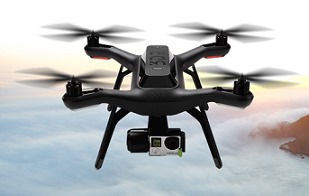Application Configuration
First, click "Read configuration" to get the current configuration from the ESC. After that, select which application to use and configure that application.
우선 ESC로부터 현재의 설정을 가져오기 위해서 "Read configuration"을 클릭합니다. 그 후에 사용하기 위한 애플리케이션을 선택하고 그 애플리케이션을 설정합니다.
Controller ID is the ID of this VESC. If multiple VESCs are connected over CAN-bus, they must have different IDs.
Controller ID는 VESC의 ID입니다. 만약 여러개의 VESC가 CAN 버스로 연결되어 있다면 이들은 서로 다른 ID를 가져야만 합니다.
Send status over CAN has to be enabled to make other VESCs aware of this VESC and some of its current state. It should be enabled for all slave VESCs when connecting multiple VESCs over CAN-bus.
Send status over CAN는 다른 VESC가 이 VESC와 현재 상태의 일부를 알아차리도록 가능하게 합니다. 이는 CAN 버스로 다수의 VESC를 연결할 때 모든 슬래이브 VESC가 가능해져야만 합니다.
Changing application requires a reboot. There is a button for that. After a reboot, you have to click connect again.
애플리케이션을 변경하는 것은 재부팅을 요구합니다. 이것을 위한 버튼이 존재합니다. 재부팅 후에 다시 연결해야만 합니다.
Timeout is the amount of milliseconds after which the motor should be shut off in case the control signal is missing.
Timeout은 모터가 커진 후에 ms의 양입니다. 경우에 따라서 제어 신호는 잃어버릴 수 있습니다.
"Brake current to use…" can be set to make the motor brake with a certain current when a timeout occurs instead of just releasing it.
"Brake current to use…"은 단지 모터의 제어권을 놓기 전에 timeout이 발생했을 때 어떤 전류로 모터에 브레이크를 걸기 위해서 설정될 수 있습니다.
PPM
The signal that a normal RC receiver outputs is a PPM signal, so this can be used when connecting an RC receiver to the servo port.
통상 RC 수신기 출력은 PPM 신호입니다. 그래서 이는 RC 수신기를 서보 포트에 연결했을 때 사용됩니다.
Control mode
Disabled: Nothing at all, motor is off.
Current: Torque control. This is what I prefer since it feels most natural. I haven’t seen hobby ESCs that have current control.
Current: 토크 제어. 저는 가장 자연스럽기 때문에 선호합니다. 저는 전류 제어를 갖는 취미용 ESC를 보지 못했습니다.
Current no reverse: Save as above, but no reverse function. Note that centring the now will give half throttle.
Current no reverse: 위와 같이 저장하세요 그러나 reverse 기능이 아닙니다. 현재의 센터링이 중간 스로틀을 줍니다.
Current no reverse with brake: No reverse, but centre is zero torque. Reversing will brake, but not change motor direction.
Current no reverse with brake: reverse가 아니며 중앙은 토크입니다. Reversing은 브레이크를 걸 것이지만 모터 회전방향에 변화는 없습니다.
Duty cycle: Duty cycle or voltage control. What most hobby ESCs use.
Duty cycle: 듀티 싸이클 혹은 전압 제어. 대부분의 취미용 ESC가 사용하는 것입니다.
PID speed control: The throttle command is intepreted as a speed set command and closed-loop control is used to maintain that speed. “PID max ERPM” sets what max throttle should be interpreted as.
PID speed control: 스로틀 명령은 속도 설정 명령으로 해석되고 폐루프 제어는 그 속도를 유지하기 위해서 사용됩니다. "PID max ERPM"는 최대 스로틀로 해석되는 값입니다.
Settings
Deadband: how much span in the centre of the throttle should be ignored.
Deadband: 스로틀의 중심에서 넓은 확장은 무시되어져야 합니다.
Minimum and maximum pulsewidth: The timing interpretation of the PPM signal can be adjusted in case your receiver doesn’t follow the specification or it you have some other reason to change it. Setting “Control mode” to “Disabled” and ticking display decoded PPM value is useful when adjusting these.
Minimum and maximum pulsewidth: PPM 신호의 timing 해석은 조정이 필요할 수 있습니다. 왜냐하면 경우에 따라서 여러분의 수신기가 스펙을 따르지 않거나 다른 이유로 변경이 될 수 있기 때문입니다. "Control mode"를 "Disabled"로 설정하고 그리고 "decoded PPM value"를 보여주기 위해 체크하는 것이 이들을 조정할 때 유용합니다.
Use Median Filter enables a filter that is very useful when there are glitches on the PPM signal. If you have a quadcopter application, you should disable the filter and make sure that there are no glitches since a filter introduces some delay.
"Use Median Filter"를 체크하는 것은 필터를 활성화하는 것으로 PPM 신호에 글리치가 있을 때 매우 유용합니다. 만일 여러분이 쿼드콥터 애플리케이션을 갖고 있다면 여러분은 이 필터를 비활성화 시켜야 하고 필터는 약간의 시간 지연을 야기하기 때문에 글리치가 없도록 확실하게 하여야 합니다.
Soft RPM limit.
Speed limit that can be used in current control mode. Setting the start and end limits a bit apart will result in a soft torque decay when approaching the speed limit.
current control mode에서 사용될 수 있는 속도 한계입니다. start와 end 제한을 약간 떨어져 설정하는 것은 속도 한계에 도달했을 때 부드럽게 토크가 감소하는 결과를 갖습니다.
Multiple ESCs over CAN can be enabled to connect several VESCs over CAN bus. All VESCs must have different Controller ID and the slave VESCs must have Send status over CAN enabled (see the general tab under app configuration). The slave VESCs don’t need to have any application enabled since they will just be listening for CAN commands. Traction control can also be enabled, which reduces the torque on motors that spin faster than the slowest motor proportional to their speed difference. To connect VESCs over CAN-bus, connect the CANH and CANL signals between them. DO NOT connect 5v and GND because that is likely to cause ground loops which can reset and/or kill the VESCs.
CAN으로 다수의 ESC는 CAN 버스에 몇개의 VESC를 연결하는 것으로 활성화 할 수 있습니다. 모든 VESC는 다른 Controller ID를 가져야만 하며 슬레이브 VESC는 Send status over CAN가 활성화(see the general tab under app configuration) 되어야만 합니다. 슬레이브 VESC는 그들이 단지 CAN 명령을 듣고 있을 것이기 때문에 어떤 애플리케이션이 활성화 시킬 필요가 없습니다. Traction control은 또한 활성화 될 수 있습니다. 이는 그들의 속도 차에 비례하여 가장 느린 모터보다 빠르게 회전하는 모터에 토크를 감소시킵니다. CAN 버스로 VESC를 접속하기 위해서 그들 사이에 CANH, CANL 신호를 연결합니다. 5v와 GND를 연결하지 마세요. 이는 VESC를 초기화 하거나 손상시킬 수 있는 그라운드 루프(ground loop)를 발생시킬 수 있기 때문입니다.
'Flight Controller 이해 > 전자속도제어기(ESC)' 카테고리의 다른 글
| Qt에서 vesc-tool 컴파일 방법 (0) | 2018.01.30 |
|---|---|
| VESC - Open Source ESC(8) (0) | 2018.01.07 |
| VESC - Open Source ESC(6) (0) | 2018.01.06 |
| Communicating with the VESC using UART (1) | 2018.01.05 |
| Startup torque on sensorless BLDC motors (0) | 2018.01.03 |








